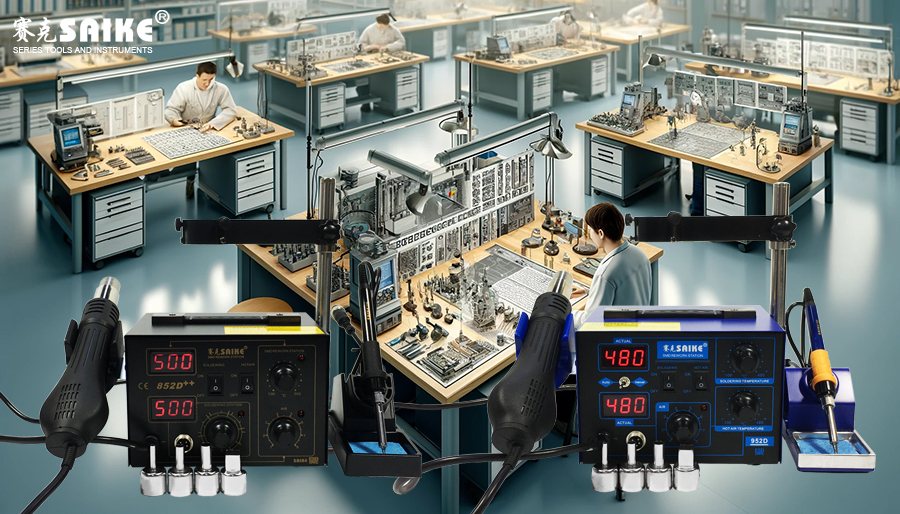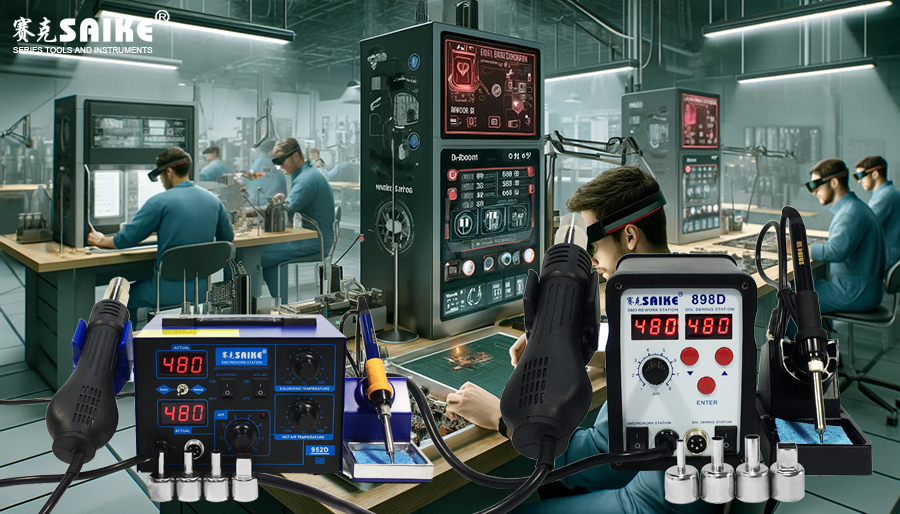
SK-YJ000RFCHT-KP 100006
The hot air rework station is a crucial device in the electronics industry, used for precise control of temperature and airflow for component soldering and desoldering. This article will delve into the main structure and key functions of a hot air rework station, helping users better understand the equipment’s working principles and operating methods.
I. Analysis of the Main Structure
The main unit of a hot air rework station typically consists of the following key components:
1.Heating Element: This is the core of the hot air rework station, responsible for generating the necessary heat. The heating element often employs high-efficiency ceramic materials, capable of rapid heating and maintaining a stable temperature.
2.Fan and Air Duct: The fan drives air through the heating element, and the heated air is then evenly blown onto the target component through the air duct. The duct design is essential for directing and distributing the hot air, ensuring it acts precisely on specific areas.
3.Control System: The control system includes regulators for temperature and airflow, typically controlled and adjusted precisely by a microprocessor. Users can input specific parameters via a digital panel or touchscreen for fine-grained management.
4.Nozzle: Attached directly to the air duct outlet, nozzles come in various shapes and sizes to accommodate electronic components of different dimensions. The nozzle design is crucial for precise heating of solder joints and protecting adjacent components from overheating.
5.Housing: Typically made of antistatic material, the housing protects the internal components and ensures safe operation. Its design also considers the device’s heat dissipation needs to prevent overheating.
II. Analysis of Key Functions
The key functions of a hot air rework station are primarily reflected in the following aspects:
1.Temperature Control: Precise temperature control is fundamental to a hot air rework station. The device can adjust to appropriate temperatures based on different solders and component types, preventing damage to sensitive components due to excessive heat.
2.Airflow Adjustment: The adjustability of airflow allows operators to control the coverage and heat distribution of hot air according to work requirements. This is crucial when handling components of different sizes and sensitivities.
3.Program Storage and Recall: High-end hot air rework stations often feature program storage capabilities, enabling the saving of commonly used temperature and airflow settings for quick setup during repetitive tasks.
4.Automatic Cooling and Safety Features: For the safety and longevity of the equipment, many hot air rework stations automatically initiate a cooling program after shutdown for rapid temperature reduction. Additionally, overheat protection and self-checking for faults are common safety features.
5.User-Friendly Interface: Modern hot air rework stations are typically equipped with an easy-to-operate user interface, including a touchscreen and LED display, making settings and monitoring more intuitive.
III. Summary
In conclusion, the design of the hot air rework station fully considers the special needs of electronic component soldering. From precise temperature and airflow control to diversified nozzle designs, every part aims to enhance soldering quality and efficiency. Understanding these key components and functions not only aids users in selecting suitable equipment but also optimizes the operation process, ensuring efficient and safe maintenance and production work.


